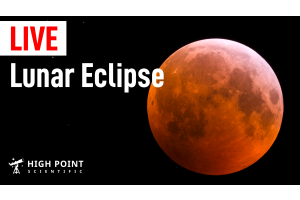
2017 Solar Eclipse. Image Credit: Kyle Denny
Throughout history, eclipses have been viewed with great significance and wonder. Many ancient cultures associated eclipses with supernatural events or ominous signs, while others saw them as a chance to observe celestial phenomena and make astronomical discoveries.
Some observers, having studied the timing of eclipses in detail, noticed that they occurred in cycles and that they weren’t random, supernatural events at all - they could, in fact, be predicted.
Eclipse Seasons
 Diagram explaining a solar eclipse. Image Credit: NASA
Click to Enlarge Image
Diagram explaining a solar eclipse. Image Credit: NASA
Click to Enlarge Image
When it comes to solar eclipses, on average, there are typically two solar eclipses per year, but there are exceptions to the rule. For example, in the year 2000, four solar eclipses occurred, but they were all partial. In fact, while a solar eclipse can be expected every 6 months or so, the majority of these are partial, with total solar eclipses only occurring roughly once every 18 months or so.
The reason we know this is because eclipses fall in seasons. Eclipse “seasons” can be defined as a roughly 35-day period during which at least two eclipses happen. This is typically one lunar and one solar, but occasionally a third eclipse will occur. These seasons repeat in cycles of about 173 days, just short of six months.
For example, the famous North American eclipse of April 8th, 2024 was preceded by a penumbral lunar eclipse on March 25th. The reason we don’t have an eclipse every month is because the Moon’s orbit relative to the ecliptic (the path the Earth and planets follow around the Sun) is tilted by about 5 degrees, and so the Sun, Earth, and Moon are only aligned roughly every 6 months.
Saros Cycle
 Image of the Saros Cycle: Courtesy of Fred Espenak, NASA GSFC
Click to Enlarge Image
Image of the Saros Cycle: Courtesy of Fred Espenak, NASA GSFC
Click to Enlarge Image
Eclipses can also be predicted centuries in advance, but in order to do this, we need to understand the Saros cycle. The Saros cycle has a period of about 6,585 days, or roughly, 18 years and 11 days. The timing is significant, as this is the time it takes for the Earth, Sun, and Moon to all return to the same relative positions. Once this happens, the cycle of lunar and solar eclipses begins again.
For example, the solar eclipse of June 30th, 1973, was followed by an almost identical eclipse 18 years and 11 days later, on July 11th, 1991. Likewise, the eclipse of August 21st, 2017, will have a “twin” eclipse on September 2nd, 2035 - 18 years and 12 days later. While the specifics of the eclipses aren’t precisely the same, the similarities are strong enough to make predictions possible.
The earliest historical evidence for the Saros cycle dates back to the Chaldeans, sometime around 200 BCE. Other civilizations - such as the ancient Greeks - noticed the same pattern and also used them to predict the timing of eclipses. However, it was the famed astronomer Edmond Halley who gave the cycle its name.
Thousands of years ago, astronomers would meticulously calculate the details of each eclipse and would then wait to see if their predictions came to pass. As recently as 50 years ago, astronomers depended on professionally published eclipse tables to determine which eclipses might be visible.
Now, in the 21st century, through the use of powerful handheld computers - our own smartphones - we can not only predict eclipses but visualize them as well. Apps like Stellarium and SkySafari can show us what almost any eclipse in history would look like from any location on Earth. SkySafari will even let you see the eclipse from the surface of the Moon!

Learn More
Interested in learning more about nebulae, galaxies, planets, and more? Not sure where to begin? Check out our Astronomy Hub!
This Article was Originally Published on 03/08/2024







